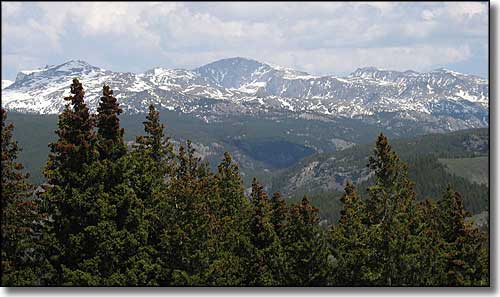
Bighorn National Forest

Cloud Peak in Bighorn National Forest
Bighorn National Forest sits atop the Bighorn Mountains, a sister range of the Rocky Mountains. The forest preserves lush alpine meadows and grasslands, rolling hills and sheer vertical granite walls, glacier-carved valleys and crystal clear lakes. Midway between Yellowstone National Park and the Black Hills of South Dakota, the Bighorn Mountains are a complete vacation destination in themselves.
With three scenic byways, fourteen picnic areas, thirty-two campgrounds, more than a thousand miles of trails, thousands of miles of fishing streams, hundreds of mountain lakes and more than 189,000 acres of wilderness, Bighorn National Forest is quite the place.
The majority of Forest Service campgrounds are operated and maintained by a private concessionaire. Most campgrounds have drinking water, toilets, trash bins, picnic tables, and fire grates, just pay your fees at the campground entrance. If you need firewood to burn during your stay, just make sure it's already dead and down. During hunting season, any campground that isn't gated is available for use for free, but there are no services available - including dump stations. You'll need to bring your own water and live by "Pack it in, pack it out" rules. Some campgrounds have extended stay sites but most stays are limited to fourteen days in any 30-day period. Most campgrounds are "first come, first served." The developed campgrounds start to open in mid-May and start to close shortly after Labor Day.
Camping in undeveloped sites is free and allowed in most of the Forest, just watch for signs about restricted areas.
Bighorn Scenic Byway - Medicine Wheel Passage Scenic Byway
Cloud Peak Skyway - Cloud Peak Wilderness
